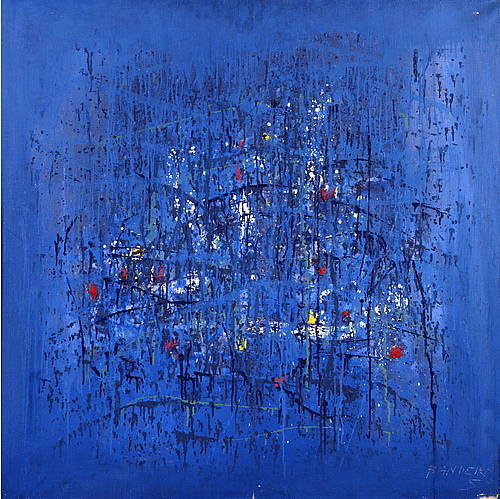Antonio Bandeira
dal 29/3/2010 al 29/4/2010
Segnalato da
29/3/2010
Antonio Bandeira
Maison de l'Unesco, Paris
On display 40 works of the Brazilian master of abstract painting, among oil and watercolor paints. The artworks were made over 30 years, from 1947 to 1967, the year of his death in France. In addition to the paintings, the public will have the chance to see documents showing Antonio Bandeira's life, such as letters, photographs, exhibition catalogs and articles.

The exhibition "Un brésilien à Paris", from 30 March to 30 April at Maison de l'UNESCO, is dedicated to Antonio Bandeira, considered one of the greatest modern painters in Brazil.
40 works of the Brazilian master of abstract painting will be on display, among oil and watercolor paints. The artworks were made over 30 years, from 1947 to 1967, the year of his death in France, a country with which the artist has kept close ties throughout his life.
Promoted by Expomus (São Paulo), with the support of the Rouanet Law, the project brought together pieces from private and public collections from Rio de Janeiro, Fortaleza and Salvador, including the Museu Nacional de Belas Artes/ Ministry of Culture, the Castro Maya Museum and the Gilberto Chateaubriand Collection - MAM/RJ.
In addition to the paintings, the public will have the chance to see documents showing Antonio Bandeira's life, such as letters, photographs, invitations, exhibition catalogs and articles from newspapers and magazines. All this material composes a bilingual catalog (in Portuguese and French), written by Vera Novis, with a preface by Patrick-Gilles Persin, a renowned French art critic, a specialist in modern and contemporary art.
Lear more about Antonio Bandeira
Antonio Bandeira was born in Fortaleza in 1922 and died in Paris in 1967. He is considered today as one of the 10 greatest Brazilian painters and one of the most important of his generation.
He was a self-taught person and at age of 23 he leaves his hometown and moves to Rio de Janeiro, stimulated by Raymond Warnier, French Attaché for Cultural Affairs. In 1945, Bandeira takes part in the exhibition at the Institute of Architects of Rio de Janeiro and won a scholarship in Paris from the French Embassy.
Between 1946 and 1950, in Paris, he attended the School of Fine Arts and the Académie de la Grande Chaumière. During his stay in the French capital, Bandeira establishes contacts with artists from avant-garde movements as Cubism and Fauvism, when he consolidates its "abstract gestural painting", as became known his work.
At that time, Bandeira met Camille Bryen et Wolfgang Schulze - known as Wols - with whom he creates the group Banbryols (initials of the names of the three painters), which lasted from 1949 to 1951, the year of Wols death. The meeting with Wols is decisive for his work and his influence is undeniable.
Back to Brazil, Bandeira starts an intense production until 1954: he takes part of the Bienais de São Paulo, he shows his work in museums in Rio de Janeiro, received several awards and participates in the 26th Venice Biennale. In 1965, the artist returned to Paris and participates in several exhibitions, including one at the Museum of Modern Art in Paris. He died in 1967 at 45 years, because of a shock after surgery.
Media Advisor
Communication, Public Information and Publications Unit
Ana Lúcia Dias Guimarães t +55 61 21063500 gcomunicacao@unesco.org.br
UNESCO Headquarters
7, Place de Fontenoy 75007 Paris
Hours:
From Monday to Friday, from 9am to 6pm. Closed on holidays.
Free admission, with identity checks at the entrance.



